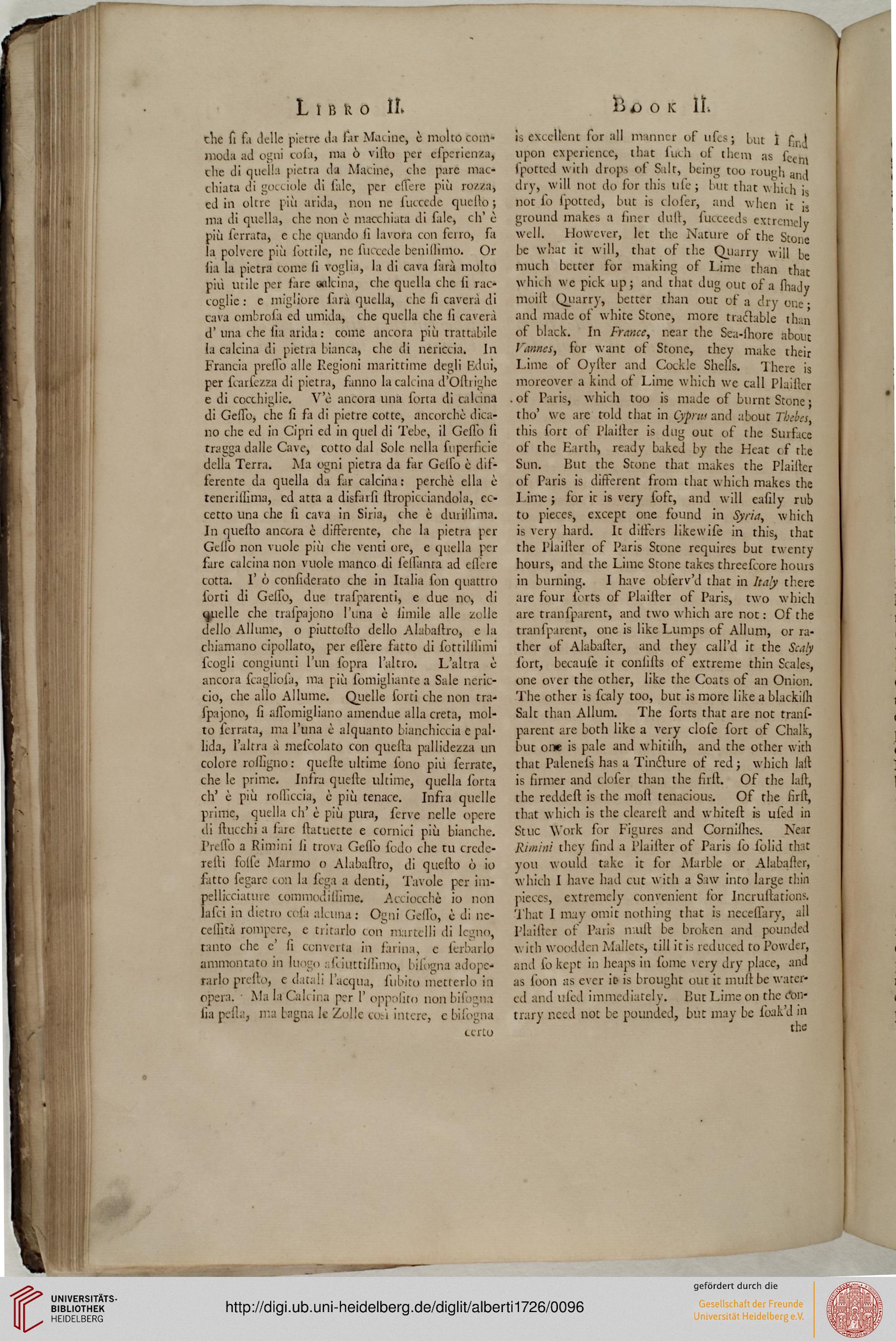L I B ft o It
che si s.i delle pietre da sar Mai ine, è molto coin-
moda ad ogni cofe, ma ò villo per espetienta,
elle di quella pietra du Macine, che pare mac-
cbiata di gocciole di itile, per edere più rozza,
cJ in oltre più arida, non ne succede quello ;
ma di ciucila, che non è macchiata di Tale, eh' è
più serrarti, e che quando li lavesa con serro, stt
la polvere più sonile, ne succede benillìnio. Or
liti la pietra come li voglia, la di cava larà molto
più utile per fare ocilcina, che quella che li rac-
coglie : e migliore sarà quella, che li caverà di
cava ombrosa ed umida, che quella che li caverà
d' una the su alida: come ancora più trattabile
la calcina di pietra bianca, che di nericcia. In
Francia predo alle Regioni marittime degli Film",
per {attrezza di pietra, fanno la calcina d'Olii ighe
e dì cocciniglie. V'ù ancora una sona di calcina
di Cedo, che si fa di pietre cotte, ancorché dica-
no che ed in Cipri ed in quel di Tebe, il Gcslo li
tragga dalle Cave, cotto dal Sole nella supcrliiie
della Terra. Ma ogni pietra da tar Gelso è dif-
serente da quella da sar calcina: perchè ella è
tenerillima, ed atta a disfarsi ilropicciandola, ec-
cetto una the si cava in Siria, che è duiillìma.
In quello ancora è disferente, che la pietra per
Cello non vuole più che venti ore, e quella per
fare calcina non vuole manco di sellanta ad eli. re
cotta. 1' ó considerato che in Italia son quattro
sorti di Gelsj, due trasparcnti, e due no, di
o/iclle che traipajono l'una è limile alle /olle
dello Allume, o piuttosto dello Alabastro, e la
chiamano cipollato, per esière fatto di sortilllimi
scogli congiunti Pun sopra l'altro. L'altra è
ancora tagliola, ma più somigliante a Sale neric-
cio, che allo Allume. Quelle sorti che non tra-
lpajono, si assomigliano amendue alla creta, mol-
to serrata, ma l'ima è alquanto bianchiccia e pal-
lida, l'altra à mescolato con quclca pallidezza un
colore rolligno: quelle ultime iono più serrate,
che le prime. Infra quelle ultime, quella sorta
eh' è più roìhccia, è più tenace. Infia quelle
prime, quella eh' è più pura, serve nelle opere
di stucchi a lare statuette e cornici più bianche.
Presso a Rimini li trova Cedo sedo che tu crede-
reili folse Marmo o Alabastro, di quello ò io
fatto legare con la lega a denti, 'l'avole per im-
pellicciature commodissirn*. Acciocché io non
laici in dietro colà alcuna: Ogni Cello, è Ji ne-
cedìtà rompere, e tritarlo con martelli di legno,
tanto che e' lì convella in farina, e sranarlo
ammontato in luogo : seiuttissimo, bisógna adope-
rarlo presto, e datali l'acqua, l'ubilo metterlo in
opera. ■ Ma la Cali ina per [' impulito nonbisogna
Ila pelle, irai lagna le Zolle coti intere, e bisogna
certo
ellein sor all
0 O K
Is.
excellent lor all manner of usesj but I fr I
upon experience, that Inch of them as scem
spotted with drops of Salt, being too rough and
dry, will not do for this tile; but that which is
not lo Ipotted, but is cInser, and when it i3
ground makes a liner dull, succeeds extremely
well. However, let the Nature of the Stone
be what it will, that of the Quarry will be
much better for making of Lime than that
which we pick up; and that dug out of a shajy
moil! Quarry, better than out of a dry one ■
and made of white Stone, more tractable than
of black. In France, near the Sca-lhore about
I'anncs, for want of Stone, they make their
Lime of Oyller and Cockle Shells. There is
moreover a kind of Lime which we call Plaillcr
.of Paris, which too is made of burnt Stone •
tho' we are told that in Cyprm and about Thibet
this sort of I'laillcr is dug out of the Suif,ee
of the Earth, ready baked by the Heat of the
Sun. But the Stone that makes the Plaillcr
of Paris is disferent from that which makes the
Lime ; for it is very soft, and will easily rub
to pieces, except one found in Syria, which
is very hard. It diflers likewise in this, that
the Plaillcr of Paris Stone requires but twenty
hours, and the Lime Stone takes threescore hours
in burning. I have oblerv'd that in Italy there
are four sorts of Plaillcr of Paris, two which
are transparent, and two which are noe : Of the
transparcnr, one is like Lumps of Allum, or ra-
ther of Alabadcr, and they call'd it the Scaly
sort, because it conlirts of extreme thin Scales,
one over the other, like the Coats of an Onion.
The other is scaly too, but is more like a blackish
Salt than Allum. The sorts that are not trans-
parent are both like a very dole sort of Chalk,
but one is pale and whitilh, and the other with
that Paleness has a Tinssure of red; which lad
is firmer and closer than the full. Of the bill,
the redded is the moll tenacious. Of the fird,
that which is the cleared and whitest is uled in
Stuc Work sor Figures and Corniihes. Near
Rimini they sind a Plaillcr of Paris so solid that
you would take it for Marble or Alabasser,
which I have had cut with a Saw into large thin
pieces, extremely convenient for Incrustations,
That I may omit nothing that is necessary, ail
I'lailter of Paiis mull be broken and pounded
v. ith woodden Mallets, till it is reduced to Powder,
and so kept in heaps in sonie \cry dry place, ami
as soon as ever it- is brought out it mull be water-
ed and uled immediately. But Lime on the con-
trary need not be pounded, but may be loak'd in
the





